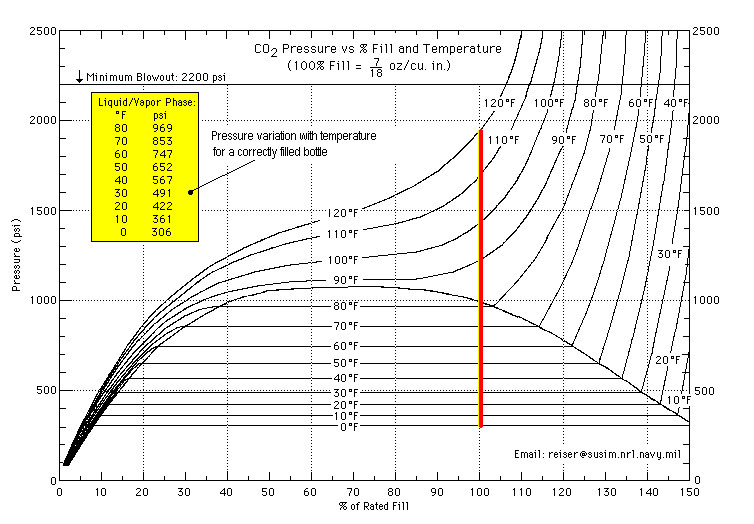I'm looking to fill my 5-liter nitrogen cylinder with a blended gas consisting of 75% N2 and 25% CO2, and I have reasons to believe that my welder filled the cylinder with too much CO2 as my brews were getting overcarbonated whilst on beer gas. And I want to get it right this time around.
Maybe this is a stupid question, but I was thinking whether that ratio should be by volume or by mass, since CO2 is heavier than nitrogen. If we go strictly by volume, wouldn't the mass of CO2 be much higher than 25% in the mixture?
Based on my calculations, you would need to fill around 4.13 liters of N2 and 0.87 liters of CO2 in order to get to a 75/25 ratio by mass, instead of 3.75/1.25 liters if you go strictly by volume.
So which way is it? I would assume everything is measured by volume.
Maybe this is a stupid question, but I was thinking whether that ratio should be by volume or by mass, since CO2 is heavier than nitrogen. If we go strictly by volume, wouldn't the mass of CO2 be much higher than 25% in the mixture?
Based on my calculations, you would need to fill around 4.13 liters of N2 and 0.87 liters of CO2 in order to get to a 75/25 ratio by mass, instead of 3.75/1.25 liters if you go strictly by volume.
So which way is it? I would assume everything is measured by volume.
Last edited:
























![Craft A Brew - Safale BE-256 Yeast - Fermentis - Belgian Ale Dry Yeast - For Belgian & Strong Ales - Ingredients for Home Brewing - Beer Making Supplies - [3 Pack]](https://m.media-amazon.com/images/I/51bcKEwQmWL._SL500_.jpg)


































